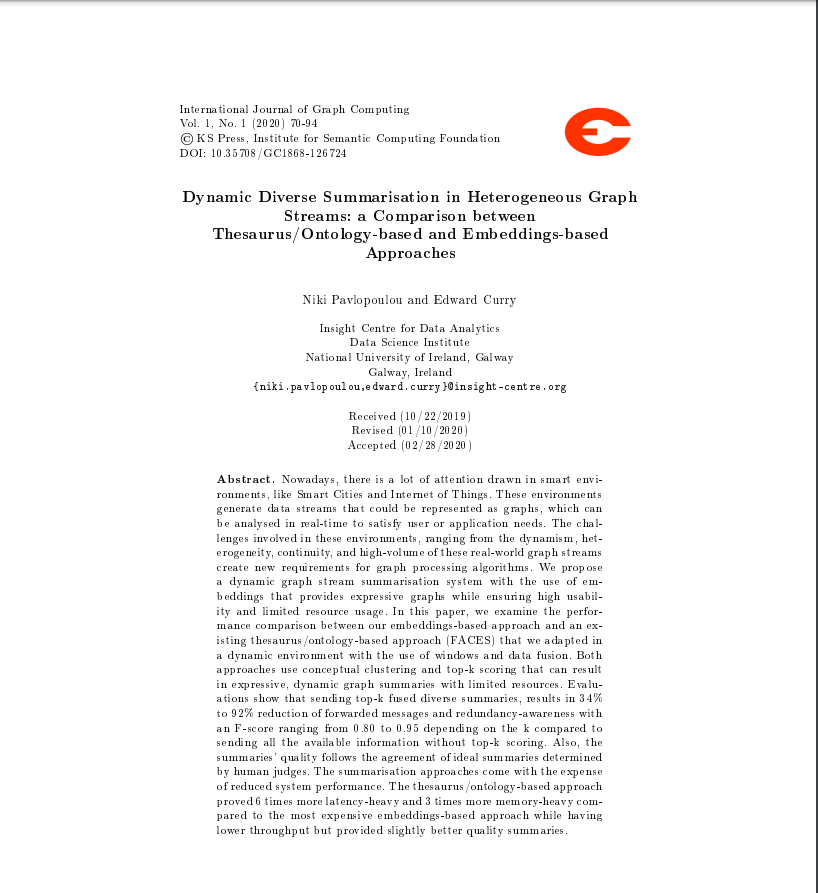Paper published in International Journal of Graph Computing, vol. 1, no. 1
Niki Pavlopoulou, Edward Curry, “Dynamic Diverse Summarisation in Heterogeneous Graph Streams: A Comparison between Thesaurus/Ontology-based and Embeddings-based Approaches”, In International Journal of Graph Computing, vol. 1, no. 1, pp. 70-94, 2020.

Abstract
Nowadays, there is a lot of attention drawn in smart environments, like Smart Cities and Internet of Things. These environments generate data streams that could be represented as graphs, which can be analysed in real-time to satisfy user or application needs. The challenges involved in these environments, ranging from the dynamism, heterogeneity, continuity, and high-volume of these real-world graph streams create new requirements for graph processing algorithms. We propose a dynamic graph stream summarisation system with the use of embeddings that provides expressive graphs while ensuring high usability and limited resource usage. In this paper, we examine the performance comparison between our embeddings-based approach and an existing thesaurus/ontology-based approach (FACES) that we adapted in a dynamic environment with the use of windows and data fusion. Both approaches use conceptual clustering and top-k scoring that can result in expressive, dynamic graph summaries with limited resources. Evaluations show that sending top-k fused diverse summaries, results in 34% to 92% reduction of forwarded messages and redundancy-awareness with an F-score ranging from 0.80 to 0.95 depending on the k compared to sending all the available information without top-k scoring. Also, the summaries’ quality follows the agreement of ideal summaries determined
by human judges. The summarisation approaches come with the expense of reduced system performance. The thesaurus/ontology-based approach proved 6 times more latency-heavy and 3 times more memory-heavy compared to the most expensive embeddings-based approach while having lower throughput but provided slightly better quality summaries.